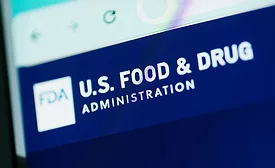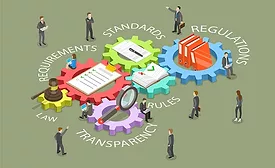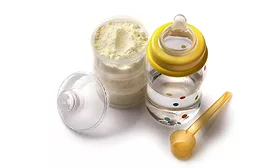George G. Misko J.D.
George G. Misko, J.D. is a Partner at Keller and Heckman LLP in Washington D.C. He counsels domestic and foreign clients on food and drug matters, with a focus on helping corporations comply with regulatory requirements relating to chemical substances specific to food contact, plastics, and food products in the U.S. and other jurisdictions, including Canada, the EU, Latin America, and the Asia-Pacific region. George has extensive experience assisting clients in obtaining regulatory clearance for products used in food and food packaging such as polymers, biopolymers, additives, coatings, printing inks, colorants, adhesives, and processing aids. George also counsels clients on environmental matters, including the use of recycled materials applications, pesticide regulation, right-to-know laws, and toxic substance control regulations.
ARTICLES
The MAHA Commission's actions on food chemical safety, GRAS determinations, and other food safety and nutrition issues are occurring against a backdrop of the reduced FDA workforce and a thinner budget
Read More
A New Day Dawns at FDA with the Establishment of the Human Foods Program
The Agency will increase oversight of chemical substances used in food and food packaging
October 11, 2024
California Tightens Requirements for Labeling Products as 'Compostable'
A number of challenges need to be addressed for compostable packaging to meet its potential
April 11, 2024
Evolution of FDA's Regulation of Packaging for Infant Food
FDA has been adjusting its industry guidance for Food Contact Notifications and Food Contact Substances for infant formula since the passage of the Infant Formula Act of 1980
October 9, 2023
Extended Producer Responsibility Programs for Food Packaging: Balancing Source Reduction with Food Safety
EPR programs shift responsibility for management and disposal of consumer products to producers and distributors—and are gaining ground in the U.S.
June 12, 2023
Navigating U.S. Federal and State Regulation of PFAS in Applications Involving Food
PFAS restrictions and bans are not consistent, and determining compliance presents numerous challenges
October 11, 2022
The Regulation of Active and Intelligent Food Packaging in the U.S. and the EU
Innovations in A&I food packaging, if allowed to advance, could significantly reduce food waste and improve food safety
April 19, 2022
The Regulation of Chemical Recyclates for Use in Food Packaging
While the need for recycling is important, it shouldn’t compromise food safety
October 18, 2021
Packaging
The Status of EU Regulations on Food Contact Materials
Member States clarify their own rules for food contact materials as they await harmonization
April 16, 2021
Packaging
The Use of Printing Inks for Food Packaging in the United States
February 26, 2021
Never miss the latest news and trends driving the food safety industry
eNewsletter | Website | eMagazine
JOIN TODAY!Copyright ©2025. All Rights Reserved BNP Media.
Design, CMS, Hosting & Web Development :: ePublishing










